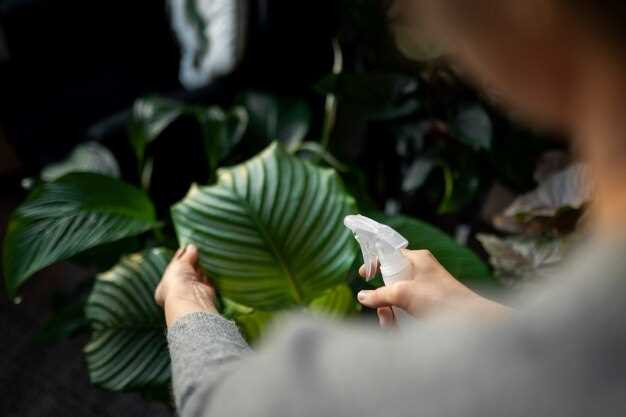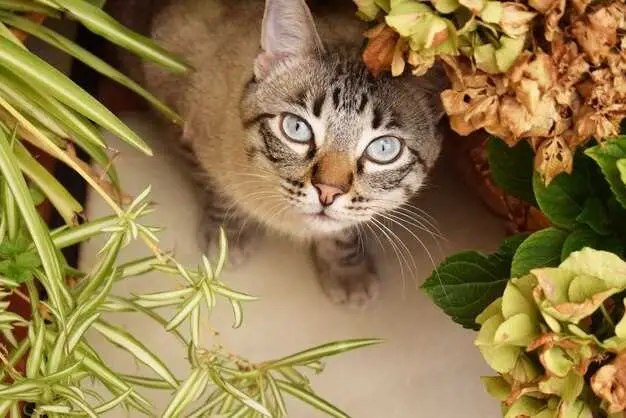
Elephant ear plants are popular houseplants known for their large, heart-shaped leaves that resemble the ears of an elephant. While these plants can be a beautiful addition to your home, it is important to understand that they can pose a potential risk to your furry friends, such as cats.
Cats are curious creatures and may be tempted to chew or nibble on the leaves of the elephant ear plant. Unfortunately, these plants contain compounds that are toxic to cats if ingested.
The most toxic part of the elephant ear plant for cats is the oxalic acid, which is present in high concentrations within the leaves. When a cat chews on the leaves, the oxalic acid can cause a range of symptoms, including vomiting, drooling, difficulty swallowing, mouth ulcers, and even kidney failure in severe cases.
If you suspect that your cat has ingested any part of the elephant ear plant, it is important to seek veterinary attention immediately. Your veterinarian may induce vomiting or administer activated charcoal to help remove any toxins from your cat’s system.
Elephant ear plants: toxic or safe for cats?
Elephant ear plants, scientifically known as Colocasia and Alocasia, are popular houseplants known for their large, heart-shaped leaves. While they can add beauty to your home, it’s important to consider the safety of your feline friends when choosing indoor plants.
Unfortunately, elephant ear plants are toxic to cats. These plants contain oxalic acid, a substance that can cause oral irritation, drooling, vomiting, difficulty swallowing, and in some cases, even kidney failure. When a cat ingests any part of the elephant ear plant, it can lead to serious health issues.
If you suspect that your cat has ingested any part of an elephant ear plant, it’s important to seek veterinary care immediately. Your vet may induce vomiting and provide supportive care to prevent further complications. In severe cases, hospitalization may be required to monitor and treat your cat’s condition.
In order to keep your cat safe, it’s essential to avoid having elephant ear plants in your home or anywhere your cat can access. If you still want to have indoor plants, there are many cat-safe alternatives available, such as spider plants, Boston ferns, or cat grass, that can provide a green touch to your home without posing a risk to your furry friend.
Understanding the danger: toxins in elephant ear plants

Elephant ear plants, scientifically known as Colocasia and Alocasia, contain toxic substances that can be harmful to cats if ingested. The plants contain calcium oxalate crystals, which are needle-like structures that can cause irritation and inflammation in the mouth, throat, and digestive tract of cats.
When a cat chews or bites into an elephant ear plant, these crystals are released, causing immediate discomfort. Symptoms of ingestion include drooling, pawing at the mouth, difficulty swallowing, vomiting, and diarrhea. In severe cases, the swelling and inflammation may be severe enough to obstruct the cat’s airway, leading to breathing difficulties.
It’s important for cat owners to be aware of the potential dangers of elephant ear plants and to take necessary precautions. This includes keeping the plants out of reach of cats, ensuring that they are not accessible indoors or in outdoor areas where cats roam.
If a cat does come into contact with an elephant ear plant or shows symptoms of ingestion, it is crucial to seek immediate veterinary attention. A veterinarian can provide appropriate treatment, which may involve rinsing the mouth, administering anti-inflammatory medications, and monitoring for any complications.
Prevention is key:
While elephant ear plants can add beauty to a home or garden, it is important to prioritize the safety of cats. Consider opting for non-toxic plants that are safe for cats if you have feline companions. There are numerous cat-friendly alternatives that can still lend a touch of greenery to your living space without posing a risk to your furry friends.
Remember, keeping your cat safe from harmful plants is an essential part of responsible pet ownership.
Signs of poisoning in cats
If a cat has ingested part of an elephant ear plant, there are several signs of poisoning to watch out for. These signs can vary depending on the amount of plant material ingested and the size and overall health of the cat. Some common signs of poisoning in cats include:
- Vomiting
- Diarrhea
- Loss of appetite
- Lethargy or weakness
- Excessive drooling
- Difficulty breathing
- Irregular heartbeat
- Seizures
- Coma
If you notice any of these signs in your cat and suspect that they may have ingested part of an elephant ear plant, seek veterinary care immediately. It is important to provide your vet with as much information as possible, including the type of plant ingested and the amount, if known.
Remember, even if your cat is showing mild symptoms, it’s always best to err on the side of caution and contact a veterinarian. Prompt veterinary care can make a big difference in the outcome for your cat.
Protecting your cat: prevention and precautions
While elephant ear plants can be toxic to cats, there are several precautions you can take to protect your furry friend from potential harm:
- Keep elephant ear plants out of your cat’s reach. Place them in areas that are inaccessible to your pet, such as hanging baskets or high shelves. This will prevent your cat from accidentally ingesting any parts of the plant.
- Monitor your cat’s behavior. If you notice your cat showing any signs of illness, such as vomiting or diarrhea, and suspect that they may have come into contact with an elephant ear plant, contact your veterinarian immediately.
- Encourage your cat to chew on safe and non-toxic plants. Offer them cat-friendly alternatives, such as cat grass or catnip, to satisfy their natural chewing instincts and reduce the risk of them seeking out potentially dangerous plants.
- Regularly inspect your home for any toxic plants. Familiarize yourself with common plants that are toxic to cats and make sure to remove them from your cat’s environment.
- Consider using deterrents. If your cat has a tendency to explore plants, you can try using natural deterrents, such as citrus peels or vinegar, to make the plants less appealing to your pet.
- Provide your cat with plenty of toys and mental stimulation. Keeping your cat entertained and engaged with plenty of toys, scratching posts, and interactive playtime can help redirect their attention away from plants.
By taking these prevention measures and being proactive, you can help ensure the safety and well-being of your cat when it comes to elephant ear plants or any other potentially toxic plants.
What to do if your cat ingests elephant ear plants
If you suspect that your cat has ingested elephant ear plants, it is important to take immediate action. Here are the steps you should follow:
- Remove your cat from the area: If your cat is still near the elephant ear plant, gently and quickly move them away to prevent further ingestion.
- Assess the situation: Look for any signs of distress or discomfort in your cat. Observe their behavior and breathing. If you notice any unusual symptoms, contact your veterinarian immediately.
- Call your veterinarian: If your cat is showing signs of poisoning, call your vet and inform them about the situation. Describe the plant and the symptoms your cat is experiencing.
- Do not induce vomiting: It is important not to induce vomiting in your cat without consulting a veterinarian first. Some plants can cause more damage when regurgitated.
- Collect plant remains: If possible, collect any remaining parts of the elephant ear plant that your cat may have ingested. This will be helpful for identification and treatment purposes.
- Follow your vet’s advice: Your veterinarian may recommend bringing your cat in for an examination or suggest specific home care remedies. It is important to follow their instructions carefully.
- Monitor your cat’s condition: Keep a close eye on your cat’s behavior and overall condition. Watch for any worsening symptoms or new signs of illness. Report any changes to your veterinarian.
- Prevent future incidents: Make sure to keep all toxic plants, including elephant ear plants, out of your cat’s reach. Consider replacing them with cat-friendly alternatives.
Remember, timely action and professional guidance are crucial when dealing with potential plant poisoning in your cat. Always prioritize your cat’s safety and seek veterinary assistance when needed.
